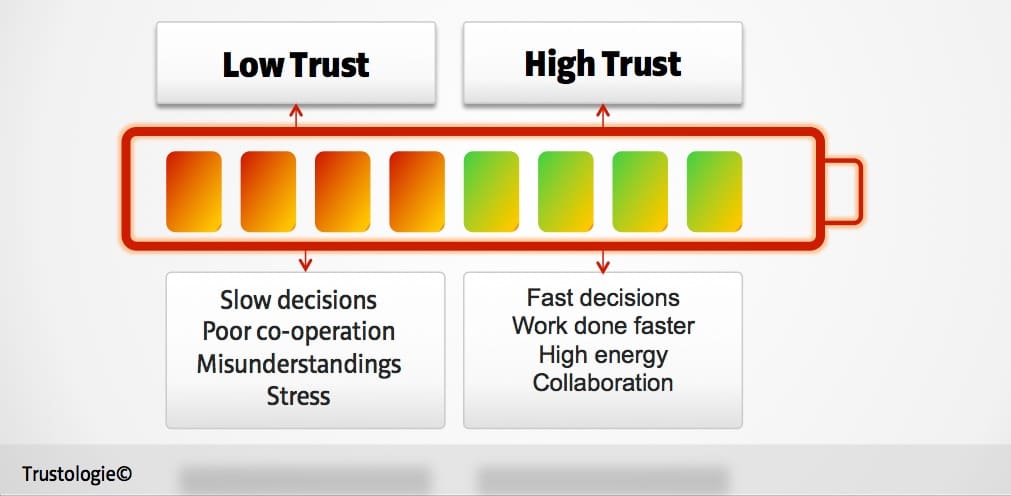Michael is the Group General Manager of an industrial company with a division of 250 people. Due to the company winning a new contract interstate, he has been travelling more frequently than normal over the last four months. The contract is not going well, so he is spending most of his time putting out fires.
Trusted Leader Blog
Access leadership and trust building communication tips to help you improve team productivity and safety.
How to Motivate Employees to Embrace Change

Over the last five years, nearly every single Australian workplace has experienced significant change at some level. Whether that’s a merger, new CEO or executive team, different business model, updated premises or even redundancies.
How Using a Trust Battery Improves Employee Performance

8 Steps for Savvy Leaders to Create Meaning in their Team (Part 2)

In last week’s post, we talked about fostering psychological safety in your team to improve performance. But it’s only one component.
20 Leadership and Trust Quotes

We all know intuitively that trust is important at work, but sometimes it’s hard to articulate why. To help you out we have put together a list of our favourite trust at work quotes:
6 New Steps to Measure Business Performance and Effective Leadership

According to a Canadian research firm, trust between a manager and employee, is the most important predictor of employee engagement.
How to Improve Trust within your Department after a Major Project Fail

In today’s pressure-cooker of a business world, the ability to handle constant change is the difference between success and failure. When situations are uncertain and risky for people and organisations, trust issues bubble to the surface, often unbeknownst to leaders.
How to Avoid the 7 Biggest Mistakes Leaders Make that Damages Trust

Today’s tricky business challenges requires leaders with increasingly sophisticated skills around fostering innovation, inspiring others, and collaboration. These competencies all require being able to build trust first.
